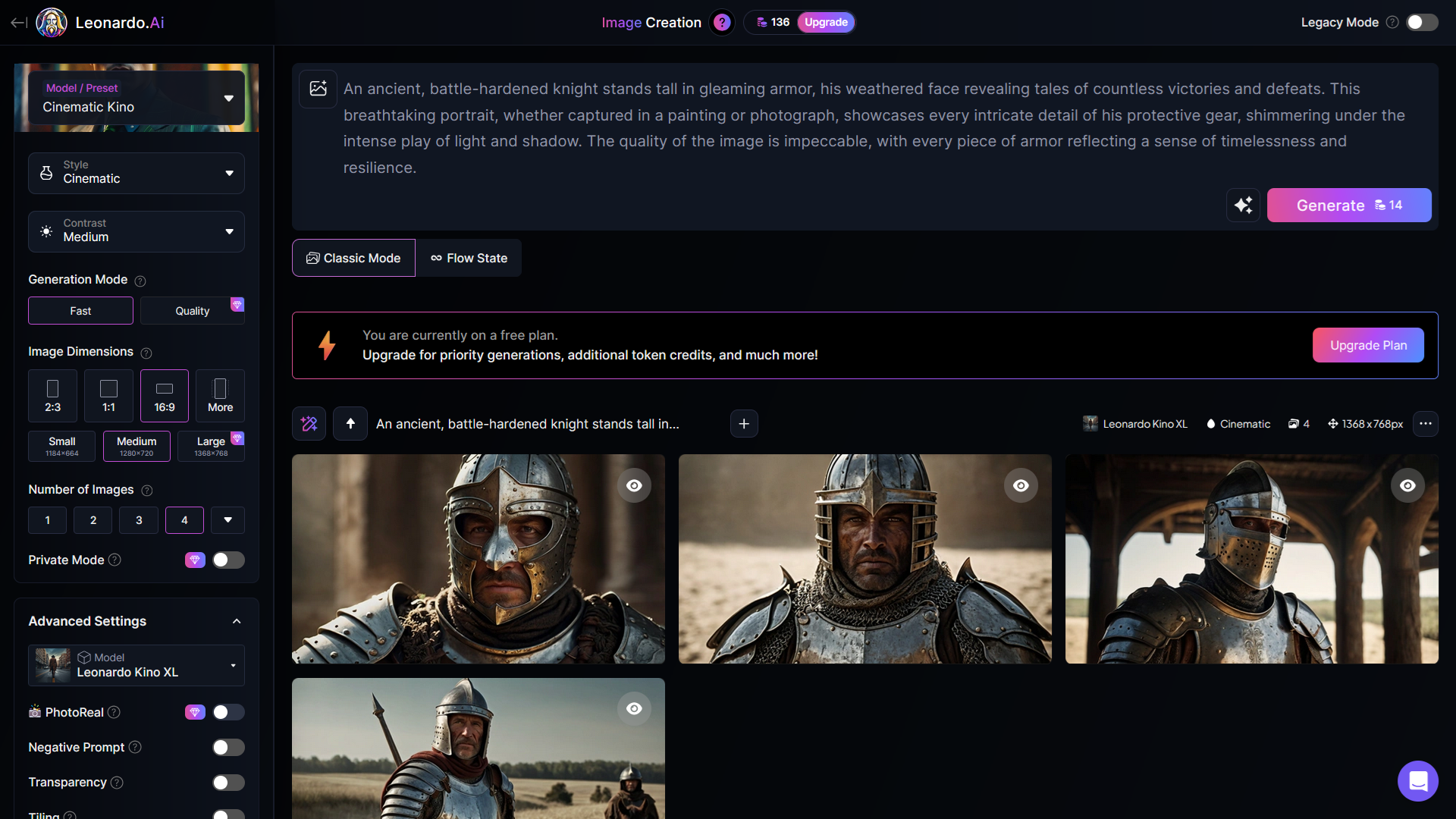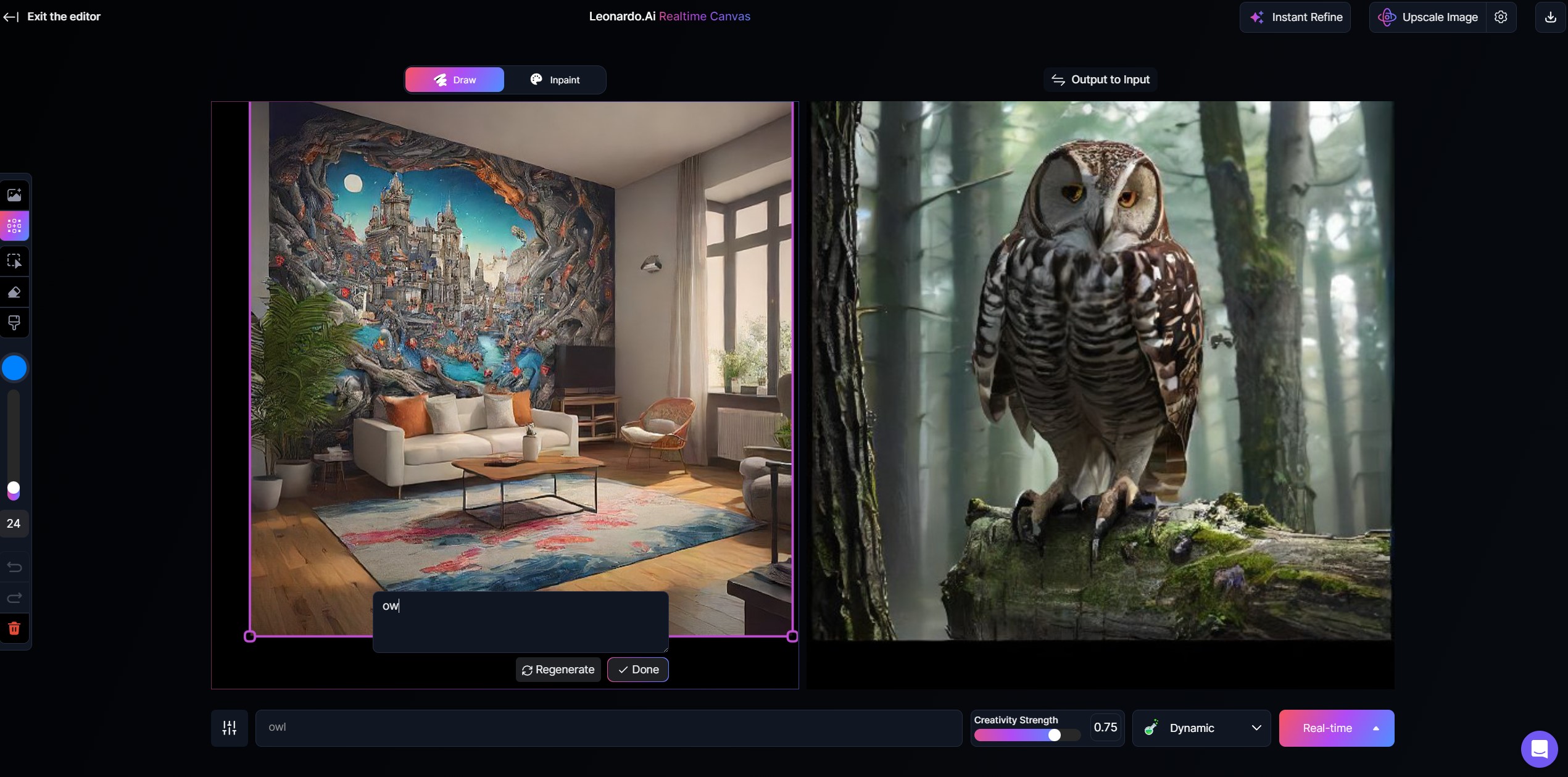What is Leonardo.Ai: everything you need to know about the AI art generator
Find your style with this powerful AI art generator

Leonardo.Ai is one of the most feature-packed AI image generators. Aside from turning text prompts into high-quality images, it also supports a catalog of AI models, each of which is fine-tuned for different art styles.
That makes it a popular choice among digital artists. It can also create video game assets, as well as photorealistic visuals.
With granular prompt controls and smartphone app support, Leonardo.Ai is a versatile tool. Here’s what you need to know about it.
This article was correct as of February 2025. AI tools are updated regularly and it is possible that some features have changed since this article was written. Some features may also only be available in certain countries.
What is Leonardo.Ai?
Leonardo.Ai launched in December 2022 as a web-based text-to-image tool. The goal was to give users the ability to easily generate production-quality visual assets, with granular control over its output. In the first year alone, it gained more than seven million users, who generated more than 700 million images.
Like the best AI image generators, Leonardo.Ai lets you create detailed and dynamic images from prompts written in natural language. What sets it apart is the level of fine-tuning it supports, including aspect ratios and art styles. It’s also unique in offering a large catalog of models and presets, each of which is suited to a particular visual style. That makes it a popular choice for everyone from digital designers to concept artists to product marketers.
What can you use Leonardo.Ai for?
Leonardo.Ai is designed to help creatives visualize their ideas and generate assets for their projects. With text-based prompts, you can use it to easily produce high-quality artwork, stylized illustrations and photorealistic visuals. It’s also capable of creating game assets and UI elements.
Get daily insight, inspiration and deals in your inbox
Sign up for breaking news, reviews, opinion, top tech deals, and more.
One of the key selling points of Leonardo.Ai is its library of text-to-image models. Each of these is specifically designed for a different purpose and visual style. There’s one for anime, for example, and another for graphic design. You can even train a model on your own brand assets, to create assets in keeping with your brand’s aesthetic.
Leonardo.Ai also lets you fine-tune style settings, while the Prompt Enhance feature can build a more detailed description based on a simple written idea for an image. To help with inspiration, the new Flow State mode can generate an infinite scrolling feed of visuals based a prompt and four style settings.
Leonardo.Ai includes a suite of additional image-based tools, including an AI upscaler and a real-time canvas which allows you to combine a prompt with simple digital doodles to create dynamic visuals. Motion is one of the latest additions. It’s an animation tool which can turn static images into short video clips with varying degrees of motion.
What can’t you use Leonardo.Ai for?
Although the new Motion tool introduces animation support to Leonardo.Ai, the app isn’t a fully fledged AI video editor. Its primary use is for generating and editing still image assets.
Leonardo.Ai also isn’t a complete replacement for the best graphic design software. While you can make in-depth adjustments to generated visuals, these elements will usually need to be incorporated into your wider workflow.
The tool will also filter prompts to ensure they don’t go against Leonardo.Ai’s terms of service, such as potentially illegal, offensive or harmful requests. Note that the app can produce images featuring copyrighted logos and content. It’s up to the user to ensure these are not used in a way which breaks the law.
If you generate images privately with a paid subscription, you own the intellectual property to them. Any images made public are owned by Leonardo.Ai and are available for use by other users.
How much does Leonardo.Ai cost?
Leonardo.Ai is available for free with performance limitations. For example, you get 150 fast tokens per day, but you can’t run jobs concurrently. To lift these restrictions you’ll need to pay for one of Leonardo.Ai’s premium plans.
- Apprentice $12 (around £10 / AU$19) per month
- Artisan Unlimited $30 (around £24 / AU$48) per month
- Maestro Unlimited $60 (around £48 / AU$95) per month
- Teams $24 (around £19 / AU$38) per seat per month
Maestro Unlimited is the top individual plan and it’s intended for power users. It includes unfettered access to a number of features, including enhanced quality generations. It also allows you to create Motion Videos.
You can read more about the specific entitlements of each paid plan here.
Where can you use Leonardo.Ai?
Leonardo.Ai was originally designed to be used via the web interface at app.leonardo.ai. Here you’ll find its full set of image generation features.
More recently, Leonardo.Ai released smartphone apps for iOS and Android. The app has an interface consistent with the web platform and can be used to access the same generative features. There’s a version in the Apple App Store specifically optimized for iPad.

Is Leonardo.Ai any good?
In our full review of Leonardo.Ai we praised its speed and performance, as well as the depth of its features. We found it capable of producing high-quality images in a short amount of time and welcomed the ability to easily fine-tune settings. We also noted that the option to train models using brand assets makes it a great choice for professional users.
More recently, we used Leonardo.Ai to create photorealistic visuals and were blown away by the results. We found that the “improve prompt” option made useful improvements to written descriptions, while the app was also able to accurately create prompts from uploaded images.
In an in-depth comparison with Midjourney, we found the latter was better able to handle complex requests, but recommended the former as a tool for creating digital art.
Use Leonardo.Ai if...
You want to experiment with different art styles
Leonardo.Ai features a large catalog of text-to-image models, each optimized for a different art style. From concept art to stock photography, you can use the art generator to produce all kinds of imagery.
You want AI to help with inspiration
The Prompt Enhance tool can automatically create more detailed descriptions from a simple written idea, while the Flow State mode generates a potentially infinite stream of images based on a prompt and four style settings.
Don't use Leonardo.Ai if...
You want a free, unrestricted tool
Leonardo.Ai is a powerful image generator and that comes at a price. There is limited free access, but power users will need to pay for additional tokens. Other image models, such as DALL-E 3 and Imagen 3 are free.
You prefer a simple user interface
Because it’s such a powerful creative tool, Leonardo.Ai’s interface is inevitably complex in places, with a number of settings to get your head around. Other image generators are easier to use, with chat-based interfaces.
Also consider
- DALL-E 3 is a text-to-image model integrated into ChatGPT. Like Leonardo, it can generate detailed images based on text prompts written in natural language. It’s user-friendly and supports selective editing, but Leonardo is better for photorealism.
- Midjourney is Leonardo’s main rival. It’s an AI image generator accessed through Discord. There’s a learning curve for the uninitiated, but it has a strong community element and generated images have a distinctive artistic style.
You might also like...

Formerly News Editor at Stuff, Chris now writes about tech from his tropical office. Sidetracked by sustainable stuff, he’s also keen on cameras, classic cars and any gear that gets better with age.
You must confirm your public display name before commenting
Please logout and then login again, you will then be prompted to enter your display name.